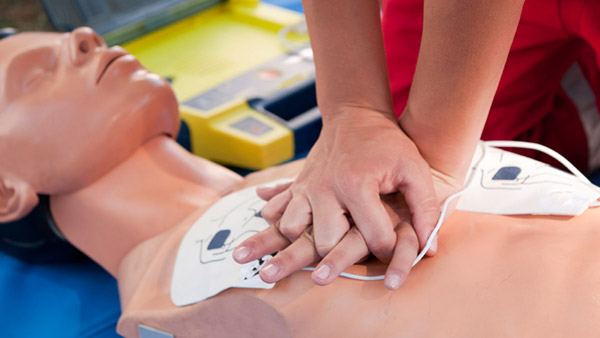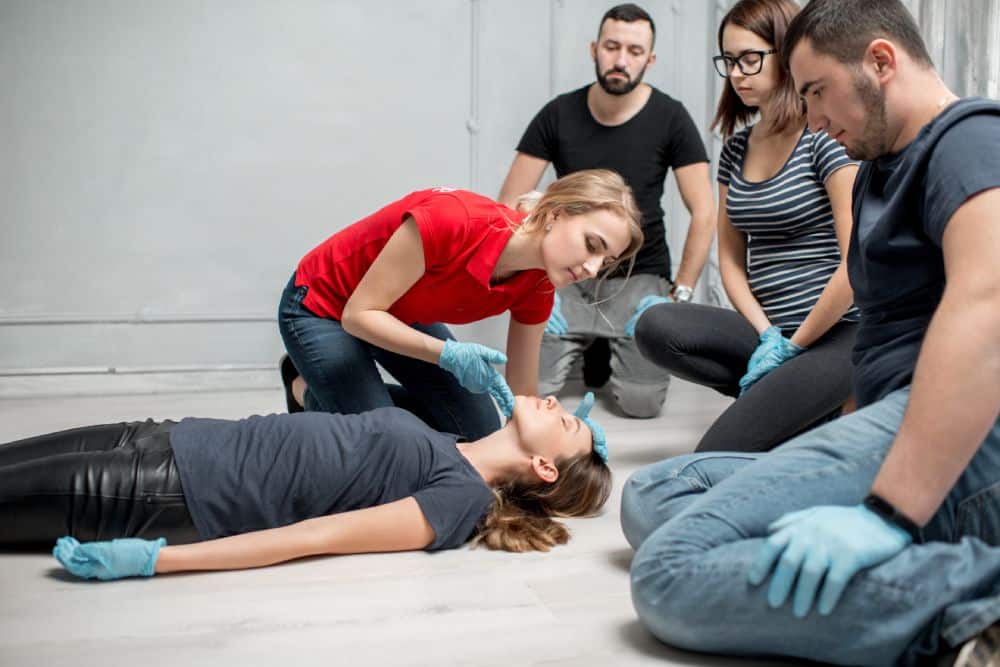Introduction
Cardiopulmonary resuscitation (CPR) is a lifesaving technique that everyone ought to understand. However, despite its essential relevance, countless false impressions border mouth-to-mouth resuscitation practices and accreditation. Numerous people might think twice to obtain licensed because of Canberra First Aid Course Near Me these misconceptions, which can inevitably cost lives in emergency scenarios. This short article aims to unmask prevalent misconceptions about CPR while emphasizing the relevance of getting certified through accredited first help courses By comprehending the realities, you can empower on your own and possibly conserve a life.
Common False impressions About mouth-to-mouth resuscitation and Why You Should Obtain Certified
What Is mouth-to-mouth resuscitation? Comprehending the Basics
CPR means cardiopulmonary resuscitation, a procedure developed to bring back breathing and flow in an individual that has actually stopped breathing or whose heart has stopped whipping. The method includes chest compressions combined with man-made ventilation strategies such as mouth-to-mouth breathing or using a bag-mask device.
- Key Components of mouth-to-mouth resuscitation: Chest Compressions: These aid maintain blood circulation to crucial organs. Rescue Breaths: These supply oxygen to the lungs. Automated Outside Defibrillator (AED): A device that can stun the heart back right into rhythm in case of particular heart arrests.
Misconception 1: Only Doctor Can Carry Out CPR
One typical misconception is that only experienced medical professionals can carry out CPR effectively. While doctor are definitely experienced at it, anyone can discover just how to do CPR via CPR courses
- The Fact: Laypersons can be trained to provide effective CPR. Basic techniques are straightforward and can be grasped by anyone going to learn. Bystanders frequently play important duties in conserving lives before professional help arrives.
Misconception 2: mouth-to-mouth resuscitation Is Just Beneficial for Heart Attack Victims
Another prevalent misconception is that mouth-to-mouth resuscitation is only for people experiencing cardiac arrest. In reality, mouth-to-mouth resuscitation can be valuable in different emergencies.
- Other Scenarios Where CPR Serves: Drowning incidents Drug overdoses Choking victims where the respiratory tract has been compromised
Misconception 3: You Must Prevent Offering Rescue Breaths
Many individuals think rescue breaths are unneeded or perhaps harmful because of the risk of infection or other problems. This comes from complication about how COVID-19 might affect these practices.
- The Realities: Rescue breaths are necessary for giving oxygen. During circumstances like drowning or opioid overdose, rescue breaths end up being crucial. Hands-only mouth-to-mouth resuscitation is recommended when a person is untrained or hesitant yet recognizing both methods remains vital.
Misconception 4: You Can't Hurt Someone by Carrying Out Mouth-to-mouth Resuscitation Incorrectly
While it holds true that carrying out CPR incorrectly may create some harm, not attempting it in all may lead to fatality.


- Understanding the Risks: Rib fractures might happen during aggressive breast compressions. Any activity taken is much better than doing nothing; modern-day standards highlight that "something" is much better than "nothing" during heart attack situations.
Misconception 5: Once You're Trained, You Do Not Need Further Training
Some people believe that when they have actually finished a training course, they don't require more training or recertification.
- Why Ongoing Training Issues: Techniques evolve with time based on new research. Regular refreshers keep your skills sharp and ensure you're up-to-date with present ideal practices.
Misconception 6: Kid Don't Required CPR Training
Parents often assume they won't need to carry out mouth-to-mouth resuscitation on their youngsters because youngsters don't experience cardiac occasions as regularly as adults do.
- The Reality for Parents: Children can deal with respiratory concerns, choking incidents, or sinking scenarios needing immediate attention. Learning pediatric-specific strategies makes sure readiness throughout emergencies including children.
Importance of Obtaining Licensed in Emergency Treatment and Mouth-to-mouth Resuscitation Courses
Why Certification Matters in Emergency Situation Situations
Being licensed in emergency treatment and mouth-to-mouth resuscitation offers a number of advantages past just discovering life-saving skills:

- Enhances self-confidence when encountering emergencies Increases understanding of safety protocols Encourages more people to progression in emergency circumstances
Benefits of Taking an Emergency Treatment Course
Comprehensive Skill Set: Individuals discover not practically CPR but likewise standard emergency treatment concepts such as wound care and handling fractures. Legal Defense: Accreditation often features Good Samaritan laws security when aiding someone throughout an emergency. Career Opportunities: Numerous jobs need first aid qualification as part of their safety and security methods; being licensed boosts employability in areas like mentor, training, medical care, and childcare.FAQs About Usual Misconceptions Regarding CPR
FAQ 1: What kind of training do I need for reliable CPR?
You should enroll in identified CPR courses that cover both grown-up and youngster resuscitation methods effectively.
FAQ 2: Exactly how typically must I renew my emergency treatment certificate?
It's suggested to restore your first help certificate every two years considering that standards alter often based upon emerging research.
FAQ 3: Is hands-only compression better than traditional CPR?
For inexperienced bystanders or those uncomfortable providing rescue breaths, hands-only compression works yet knowing both approaches provides a greater chance of survival if trained properly.
FAQ 4: What sources are offered for finding out about first aid?
Numerous companies offer on-line sources along with physical training courses; trusted systems include the American Heart Organization and Red Cross web sites which detail first aid courses readily available near you.
FAQ 5: Exist any type of age constraints on taking an emergency treatment course?
Most first aid courses welcome participants of all ages; nonetheless, some specialized courses might be geared toward certain age (e.g., kids vs grownups).
FAQ 6: Does my office need me to get certified?
Certain workplaces-- especially those entailing public communication-- often need workers to have valid certifications in emergency treatment and fundamental life support (BLS).
Conclusion
Understanding the fact behind common mistaken beliefs concerning CPR is important for increasing understanding regarding this life-saving technique. Whether you're a parent intending to safeguard your kid or a worker looking for accreditation for expert development, getting accredited through appropriate first aid courses arms you with the expertise required for acting decisively during emergencies. Bear in mind-- any individual can discover just how to execute reliable CPR no matter background; do not allow mistaken beliefs discourage you from becoming equipped! So why wait? Register today for a CPR course!
This thorough guide looks for not just to resolve misconceptions surrounding CPCR yet also works as an inspiration for everyone to look for qualification so they also can add favorably throughout emergencies!